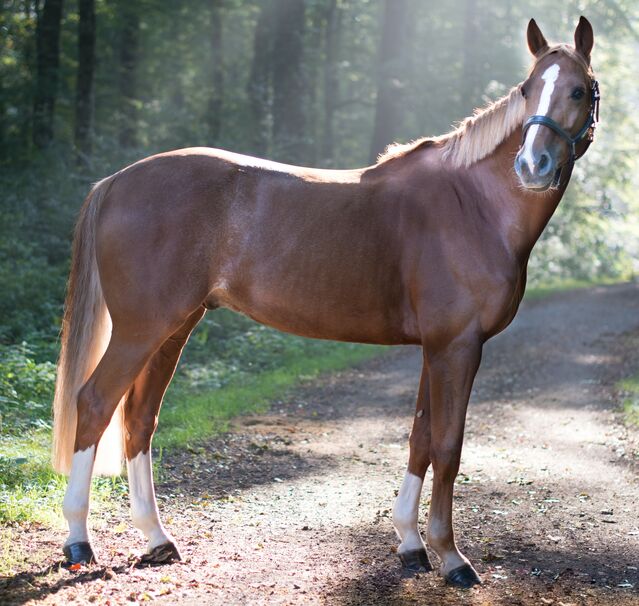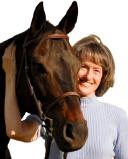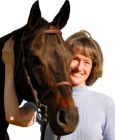Environment
Horses: By Nature or Instruction?
How much does a horse have to learn to perform well?
Posted October 11, 2021 Reviewed by Devon Frye
Key points
- It's easy to underestimate how much a horse has to learn.
- Until they've been taught, horses don't know how to behave in a barn or walk a straight line carrying a rider.
- Horses are incredibly generous in trying to learn to do what we humans ask.
- Sorting between nature and instruction allows us to begin to fully appreciate the horse’s intelligence.
If you watch horses who have always lived in the wild, they occasionally strike a beautiful pose, traverse rugged terrain, or hop over a small stream. Because of this, many people confuse what is natural for a horse with what has been taught to a horse. Even horse owners often ask whether their animals have to be taught to jump or spin or ride on trails. After all, horses make these maneuvers on their own, so what’s to teach?
Well, a lot! It’s easy to underestimate how much a horse has to learn. Let’s consider an example of the easiest thing a horse does: stand up. Have a look at the photograph below. This horse—we’ll call him Handsome—is just standing still. Surely that doesn’t have to be taught! But it does. There are several reasons this chestnut is so pretty—including the fact that he has been taught to stand like this, and do it on command.

Think of it in human terms, first. Most of us can stand up. But do you stand the way a model stands? Is your posture perfect? Is the look in your eye appealing? Is your face turned to collect angles of light that will add to your beauty? Are your legs in the right positions for the most attractive stance? Is your back lifted and long? If you’re like me when you just stand up, the answer to these questions is no.
The same is true for horses. They’re taught—over many lessons—to stand for photographs or conformation judging in a way that enhances their natural beauty and fits conventional standards. Handsome has been taught to stand with his right front leg slightly ahead of his left front leg. Similarly, he’s learned to place his right hind leg at a greater distance behind his left hind leg. This position is not coincidental; it’s a learned pose.
Leg positions are not placed by a handler who lifts and sets each foot into place. They are not formed by pushing the horse back and forth with a halter until he happens to rest his feet in specific locations. Instead, the horse is taught to adopt that stance on his own. After teaching the position over several weeks, a handler leads Handsome to the location, turns to face him, and delivers some very subtle cues to remind the horse to assume his pose.
Once in position, Handsome has also learned to remain still while a stranger clicks an odd device called a camera all around his body. He has been taught to perk his ears up and lift his head. By convention, he will have learned to stand with his head facing straight ahead. In this photo, Handsome has been encouraged to turn his head using light pressure on his halter and probably a little chirp from the photographer. However, he has been taught ahead of time to face the right (or left) without taking a step in that direction.
When you watch a horse perform at an event, almost everything you see is a function of months or years of daily training. Just to get to the show, a prey animal has to enter a small confined dark metal box that hurtles over roads at high speed—we call it a trailer. He calls it dangerous! He learns to allow us to trim his ears and legs with noisy clippers that tickle, whine, and heat up. We teach him to be bathed and brushed. He learns to lift his feet in turn so we can clean the undersides of them most every day. No one can manhandle a skittish 1,200-pound animal into doing all this. The horse is trained to cooperate with our efforts.
He stands still while predators climb onto his back. He moves forward and back at the slightest of invisible cues. He learns to ignore other horses working near him and to remain calm in the face of scary sights, sounds, and smells. If he’s had advanced training, he’s calm, slow, and careful on the most difficult trails. He jumps, spins, chases or cuts cattle, or trots in place to the rhythm of music. Horses perform in hundreds of different disciplines! Their versatility is astounding, especially when you realize they have to learn so much of it.
In short, nearly everything you see when you watch a horse interact with people has been taught. It’s a testament to the horse’s brain capacity that he is able to learn all of that. And most of it—trailering, clipping, grooming, being ridden, performing advanced movements—goes against his nature as a prey animal whose evolutionary brain demanded that he run from predators for survival.
Understanding the distinction between nature and instruction in equine behavior allows us to begin to fully appreciate the horse’s intelligence and cooperation. Horses are incredibly generous in attempting to understand what people want from them. With proper treatment, almost all of them are willing to try to do what their human leaders ask. Next time you watch a horse perform, remember how much he had to learn just to give you the privilege of a beautiful performance!




